|
Normal Stages of Development A common misconception of normal stages is that stages follow linearly in time. They do not. Stages are based on morphological features. The times between stages vary widely. Furthermore, the timing of morphological stages varies greatly with the temperature at which the embryos are reared. The early American center for research on salamander embryos was in Ross Harrison's laboratory at Yale. Harrison devised a normal series of stages for his favorite research material, the embryos of Amblystoma punctatum, as he called the species. He said that Amblystoma meant "round mouth" and that the alternate name of Ambystoma was a typo. The taxonomists insisted the name to be Ambystoma maculatum, and that is its designation now. For many years the Harrison normal stages were distributed privately, and then were published in 1969 (R.G. Harrison, "Organization and Development of the Embryo" (S. Wilens, ed.), pp44-66. Yale University Press, New Haven,CT.) My mentor, V.C. Twitty, was one of Harrison's many distinguished graduate students. When Twitty joined the biology faculty at Stanford in 1935, he found a new local source of salamander embryos, the newt, Triturus torosus as it was then known, but now called Taricha torosa. Twitty and Bodenstein devised a normal series of stages for T. torosa that was based on Harrison's normal series for A. maculatum. The T. torosa normal series was published after many years in R. Rugh, "Experimental Embryology", p.90, Burgess, Minneapolis, MN. When I was a Ph.D. student in Victor Twitty's laboratory, I was provided a copy of the original plate of the stages of T.torosa. I took the copy with me when I joined the Zoology faculty at The University of Texas at Austin in 1957. The normal stages for Taricha torosa below are from that copy. 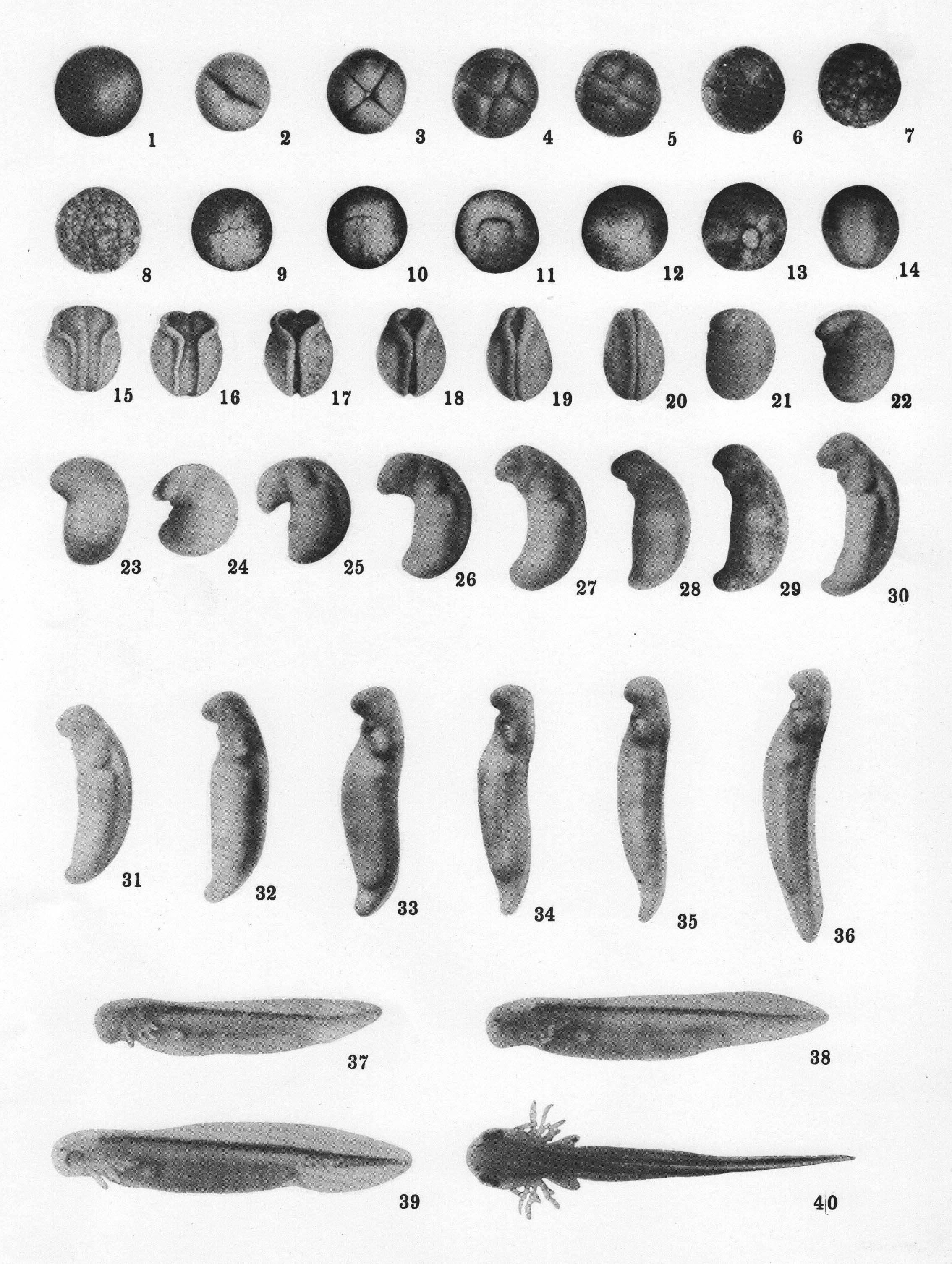
In 1974, Sister Gervasia (Gertrud. M. Schreckenberg) came to my laboratory as a visiting Faculty Fellow. One result of the work she did was the normal stages of development for the axolotl (Ambystoma mexicanum) shown below from the original photographic plates. These stages were published as G.M. Schreckenberg and A.G. Jacobson, Normal Stages of Development of the Axolotl, Ambystoma mexicanum. Devel. Biol. 42:391-400. (1975). We chose the morphological features to match those of Harrison's Ambystoma maculatum as closely as possible. The stages of Taricha torosa also were used for deciding stages. The object was to facilitate comparisons of experimental results for labs using these different species of salamanders. A newer staging series for the axolotl makes these comparisons more difficult. 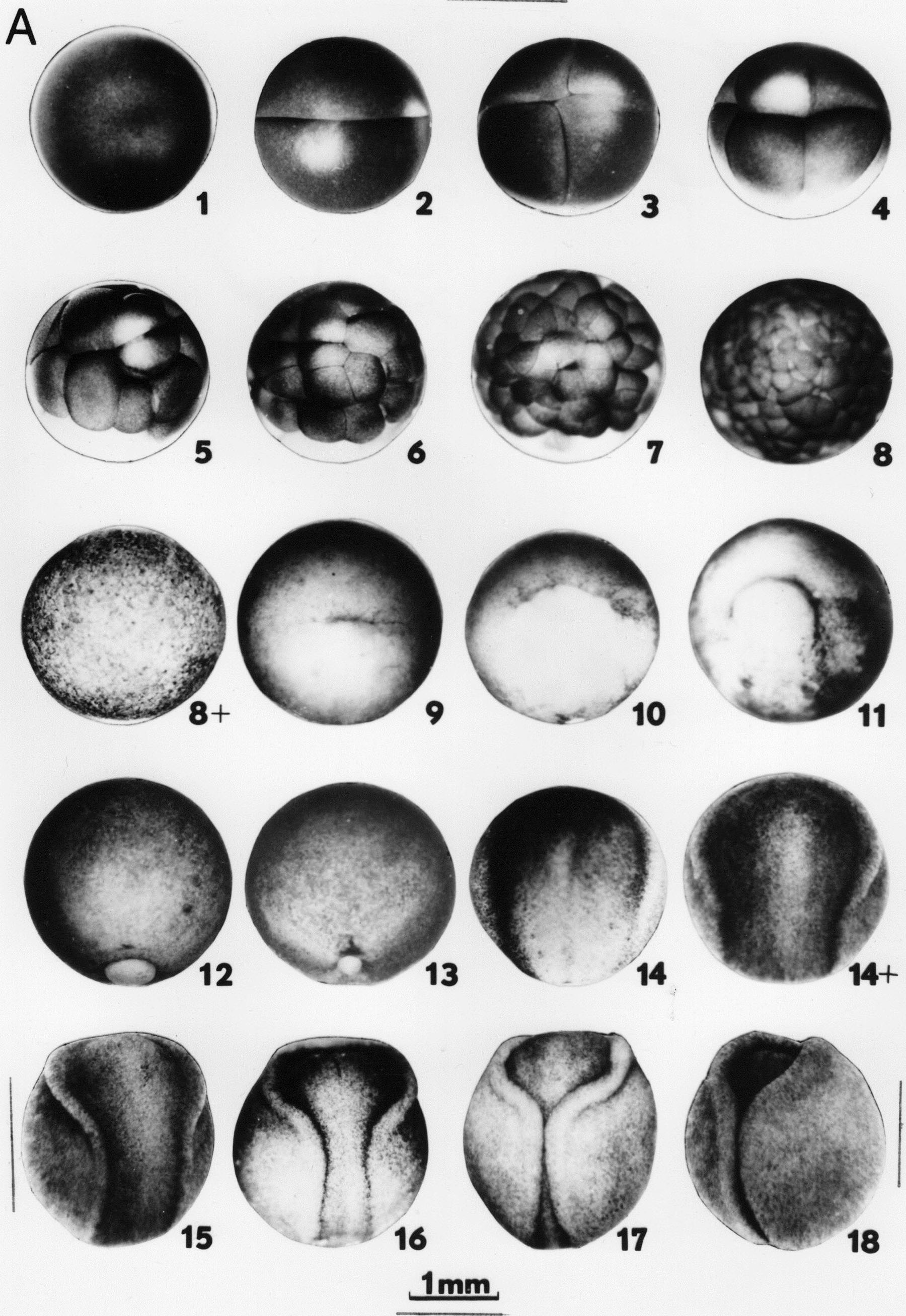
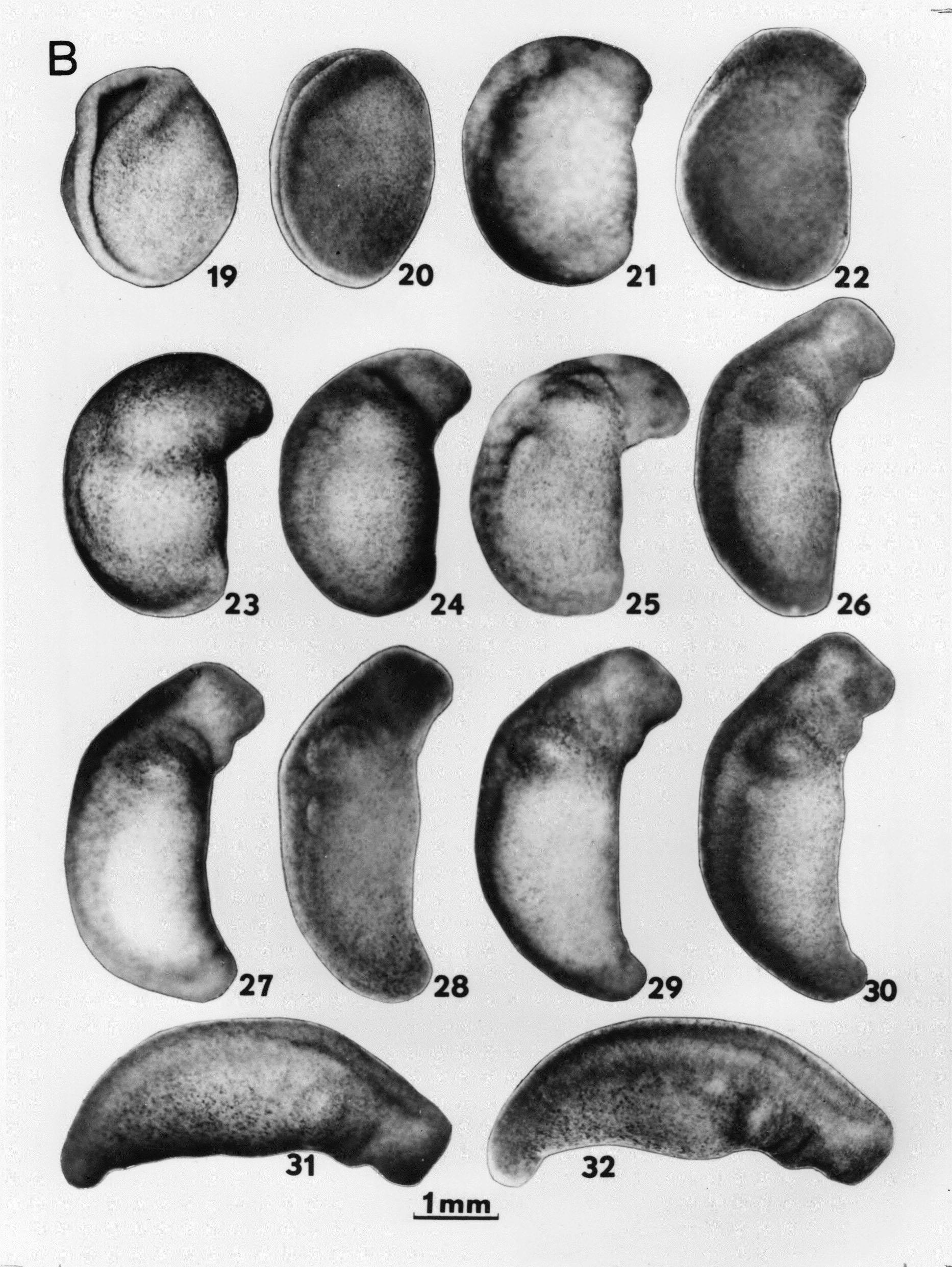
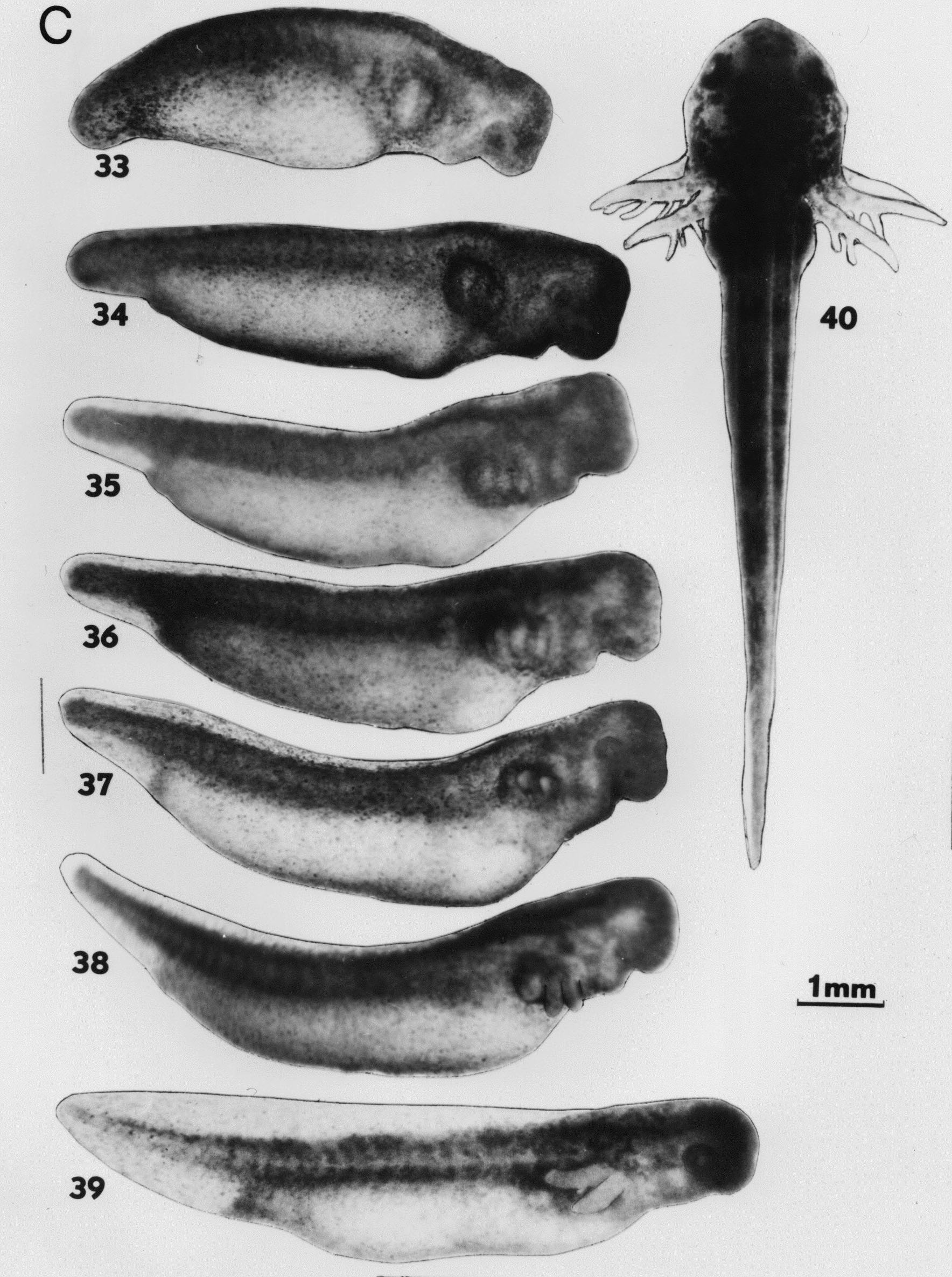
The timing plotted against the stage of the staged series of the axolotl at 18 degrees Celsius is shown below: 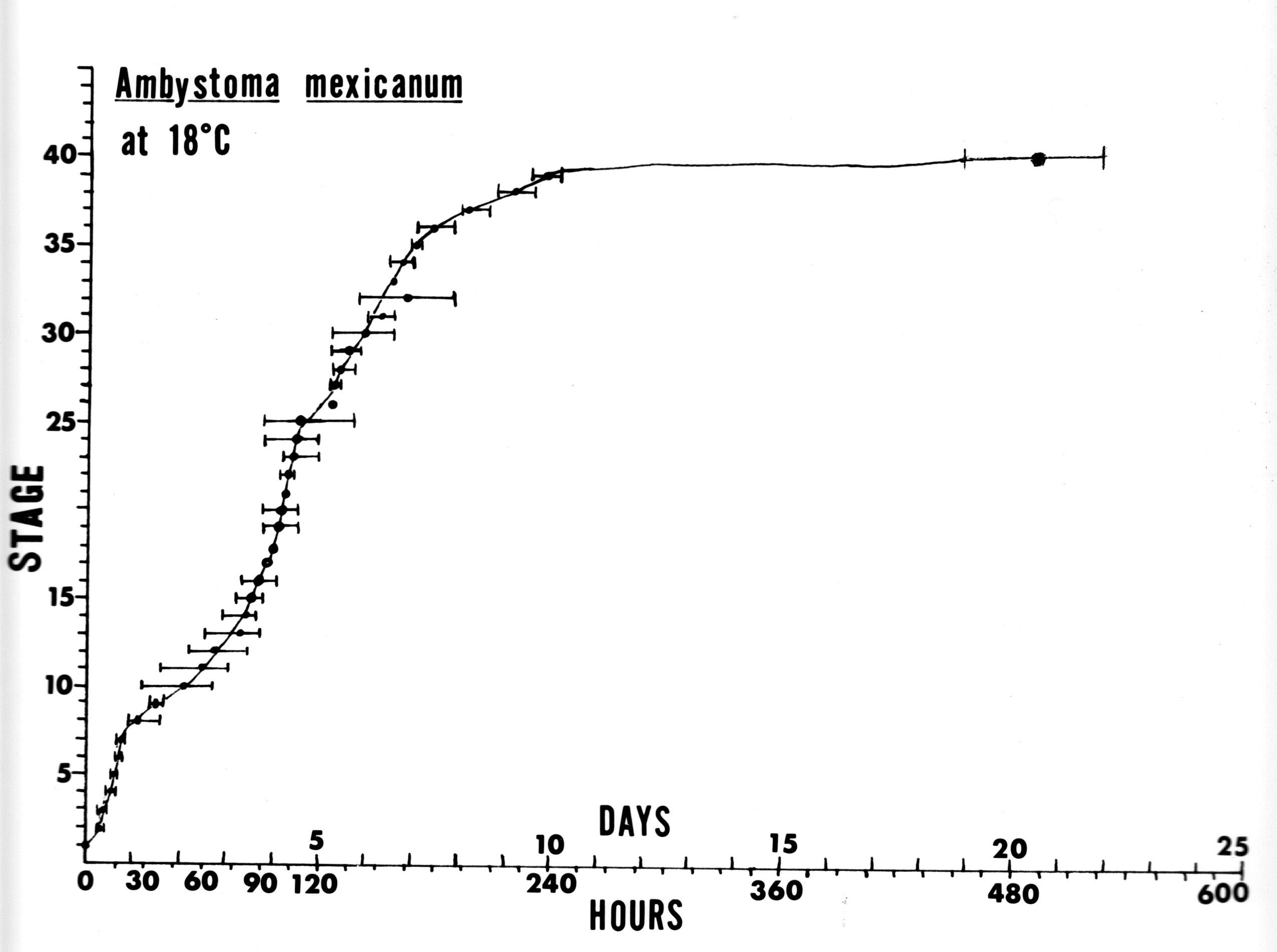
|